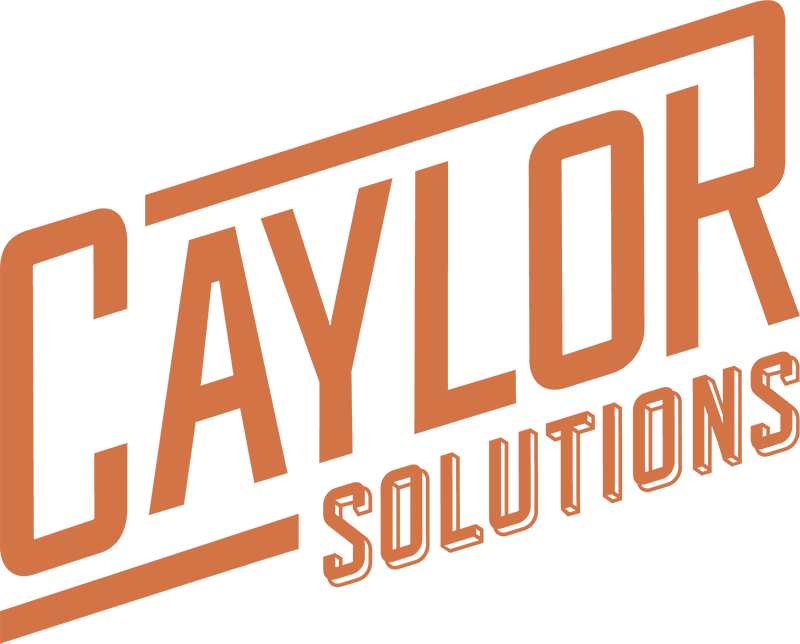When it comes to your next higher ed capital campaign, failure isn’t an option.
Goals and timelines are set, procedures are followed. When goals aren’t met, campaigns extend. They evolve. But publicly, capital campaigns in higher ed never “fail,” because they can’t be allowed to.
This mentality is only natural when the stakes are so high. A capital campaign is tough work you only commit to when the goal is mission-critical.
Whether it’s a building to support growing programs, building endowments to support financial aid, or creating an emergency fund for students affected by COVID-19, the capital campaign is about fulfilling your institution’s core promises.
This is why the campaign can’t “fail” (at least not publicly).
But privately, failures absolutely happen along the way. And I’d like to make an argument for embracing them.
The Benefits of Capital Campaign Failure
Philosophically speaking, failure should not be a dirty word. Inspiring quotes about failure abound for good reason: failure is useful.
“Failures are finger posts on the road to achievement.” – C.S. Lewis
In practice, you would think otherwise.
Too often, I think we dwell too much on the successes of previous capital campaigns. If the goal was eventually reached, we conclude that the procedures used basically worked, the job done.
But when we don’t acknowledge failures in previous capital campaigns, we miss an opportunity to learn what more we can achieve. Without failure, we can’t build on past success.
So, in the spirit of embracing failure, let’s take a look at the top 8 failures that might have caused your last capital campaign to struggle to reach its goal.
Top 8 Countdown of Capital Campaign “Failures”
I’m sure you’ve taken many important steps to create a foundation for success. You’ve assembled a top-notch campaign committee, done your homework with a feasibility study, tapped talented major gift officers, etc.
But in my experience, the following are common mistakes or at least missed opportunities I suspect you made in your last campaign. I encourage you to view them happily as failures – or, if you prefer, C.S. Lewis’ “finger posts on the road to achievement.”
#8 Marketing and development didn’t work closely together.
I don’t know who first said “teamwork makes the dream work,” but it’s a great nugget of wisdom that applies to any successful capital campaign.
Whatever your role, you may have experienced some frustration in the past with the idea that individuals with sales prowess carry the campaign. In reality, while major gift officers are essential, overreliance on their talents will only get you so far.
As Sophie W. Penney, director of foundation relations at Penn State University puts it:
“Sometimes it seems that one person is responsible for raising a particular gift (the fundraiser who brings back the big check or the signed paperwork). However, this is rarely the case in any nonprofit, and even less so in academe. Deans, faculty, presidents, volunteers, and development officers, and yes, staff assistants too, all play a role in bringing gifts to fruition.”
I’d like to add some other important individuals to this list: marketing personnel.
Marketing should be brought into the campaign early on to provide services that can make the campaign more efficient and effective, delivering more gifts, larger gifts and recruiting more donors.
More on these crucial services below.
#7 Your capital campaign case statement didn’t connect with your audience.
The three most common reasons a case statement fails to motivate giving are:
- There isn’t enough compelling information provided.
- It doesn’t speak to the audience.
- It’s too much about you, not enough about your audience.
Again, a campaign that is over reliant on the talents of individual fundraisers might overlook the importance of the case statement. You don’t need a well-crafted case in a perfect world where loyal donors give the lion’s share based mostly on their personal relationship with a gift officer.
But in a world where wealthy donors are known and targeted by dozens, if not hundreds of organizations who can reach them via multiple digital and traditional channels, only a powerful, personalized message will stand out.
In addition to compelling financial information tying your mission and values to your strategic goals, you also need to speak your audience’s language.
Marketing can help create donor personas, which help you craft your case statement(s) in a way that is meaningful for them.
Your messaging should never focus on what you want to accomplish, but rather what your audience can accomplish by partnering with you.
#6 You didn’t use the power of video to capture the vision.
Video is increasingly considered a vital component of social media campaigns for commercial brands. They’re using its power to drive clicks, likes and shares. Just basic engagement.
Considering how mission-critical your capital campaign is, how much more vital is it for you to utilize the power of video? Failing to harness video is a huge missed opportunity to court donors.
Consider these stats re. Facebook video ads vs. image-only ads. Compared to images, video can produce:
- 2x the increase in clicks (views of your video)
- 2-3x higher click-through rate (visits to your site)
- 20-30% increase in conversions (in your case, gifts)
The reason video is so powerful is that it allows for the greatest emotional impact you can make without being physically in front of a donor.
You can tell the story of the need, make an appeal directly to the camera, use infographics to outline the goal, perhaps overlay it with music to underline your hopeful or urgent tone, etc.
Here’s a great example of a relatively simple capital campaign video by Gannon University, making an appeal to raise funds for a new chapel. I like the straightforward approach Fr. Michael Kesicki gives to explaining and showing the need and thanking donors for their support.
#5 Direct mail was underutilized.
It’s understandable if digital communication has come to dominate the conversation within your marketing and development teams.
Digital is versatile, agile, affordable and measurable. (More on that last one below.) Social media is easy to use. There are amazing tools you can use to partially automate email personalization.
On the other hand, print feels increasingly cumbersome. You have to build in the time and cost of sending creative off to a printer and sending out mailers and letters.
But cumbersome as it may seem, it’s worth it.
Great for Building Your Capital Campaign Sub-Brand
While digital media is great for delivering personal messaging to a smartphone screen or email inbox, traditional media is still a powerful tool for branding and awareness building.
And that’s exactly what you’re doing – building a brand, or a sub-brand, for your campaign. From the stories you tell to the messaging themes to taglines, etc., awareness needs to be built around the specific goal. Traditional tools like direct mail help reinforce that focus.
Ideal for Your Target Audience
It also tends to raise the respectability of your campaign among your target audience. Alumni and other donors tend to be older, with a more traditional sense of what makes a campaign legitimate.
While Gen Z or Millennials might be only mildly impressed with a direct mail piece, a Gen X or Baby Boomer donor might only fully appreciate the importance of your capital campaign if they hold the message in their hands.
#4 Digital marketing was haphazard.
On the flip side, you may have utilized digital media a lot in previous campaigns, but without much planning or oversight.
Telltale signs your digital marketing isn’t as strategic as it could be:
- Metrics aren’t assigned.
- Goals aren’t set.
- Methods aren’t supervised.
- Results aren’t monitored.
Another important role marketing can play in the capital campaign is to create and execute a coordinated digital marketing plan.
The team can assign metrics, e.g. objectives for social media conversions, email list building, website traffic (more on websites below!), etc., train the team in best practices, report performance and ensure the best possible results.
#3 Major donors were underacknowledged.
There are two ways to show your appreciation for major gifts. Many development teams are really good at one and struggle with the other.
- The first way is to thank donors privately and personally while expressing to them what their gift has helped make possible. This helps the donor connect to the campaign on a personal level and encourages them to continue giving. Development officers are great at this.
- The second way is to thank and acknowledge donors publicly, instilling in them a sense of belonging in the giving community while encouraging others to participate. This is where I see many capital campaigns drop the ball.
While there may be a standard question asking the donor if they would like to be acknowledged, there is often little to no follow-through when the donor says “yes.”
Again, this is where marketing can help make the most of donor acknowledgements, by:
- Publishing a story about the donor and why they gave.
- Interviewing the donor in a video or podcast.
- Introducing the donor to a student whose life was impacted by the gift (in a video/podcast).
- Acknowledging the donor in a progress announcement (more on this one below).
The takeaway here is that donors who say “yes” to being publicly acknowledged usually understand that it’s not only about boasting (though there’s nothing wrong with being proud of a gift). It’s also about encouraging others to join the giving community or to keep giving.
If they want to help, by all means, use them.
#2 Your audience didn’t know how the money was being used in real time.
Capital campaigns are often multi-year endeavors. That means there is plenty of time for donors to lose interest, forget what their gift was supposed to achieve, or worse, feel as though their gift could have been better directed elsewhere.
You can’t wait until the end of the year to give progress updates. If you don’t deliver frequent, real-time news about where the money is going, illustrating why the campaign matters, you risk losing invaluable momentum.
There are several solutions to this pitfall:
- Send out a newsletter (print and digital) to donors at least quarterly.
- Establish relationships with local journalists who will publish gift announcements.
- Publish campaign updates in your alumni newsletter.
- Post progress updates regularly on social media.
But my favorite way to address this issue is part of the solution to the #1 mistake I see in higher ed capital campaigns.
#1 There was no central hub where the public could learn about the capital campaign.
You can have a compelling case, great people on the committee, plenty of communication channels in place, and all your other ducks in a row.
But when you don’t have a microsite dedicated to your capital campaign, you fail to bring it all together.
A capital campaign microsite is a small, standalone site that stands at the center of all the action. It can accomplish so much as a/an:
- Internal resource keeping everyone on the same page.
- Platform to prominently display your case statement(s).
- Repository of media, especially video, with stories related to the campaign.
- Landing page(s) to which you can direct all recipients of digital and traditional comms.
- Source of news for anyone who wants to check on the campaign progress.
I can’t stress enough how useful a capital campaign microsite can be in making your campaign more successful.
If you didn’t create a microsite for your capital campaign last time, it’s one “failure” you can turn into many exciting opportunities.
I love helping institutions nail their capital campaigns and raise vital funds that help them fulfill their promises.
Whether large universities where teams sometimes struggle to work together or small, private colleges where resources are stretched thin, failure is common. And it’s good.
It’s good because it shows us where we can grow. Acknowledging it just helps us become more successful in the future.
Let’s take a look at your failures together and have an honest conversation about what we can do to address them in your next capital campaign.
While a microsite alone won’t solve all your problems, I suspect it will be part of the solution.
Looking for Enrollment Marketing Content that Works?
You’re in luck! We’ve curated 25 awesome ideas inspired by top higher ed institutions across the country and put them in one handy guide: 25 Ideas for Great Admissions Content.

-
- 25 enrollment marketing content ideas you might never have considered before
- Guidance on how to use each one for best results
- Brief discussion on why they work to help you sell these ideas to your team
Get inspired.
Get enrollment results.
Get 25 Ideas for Great Admissions Content.
Download your copy today!
Featured image by Tashatuvango via Adobe Stock












